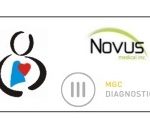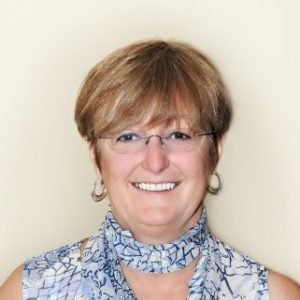
Back in 2016, I was working as the Lead Respiratory Therapist, or Chief Technologist, at a Toronto based respirology clinic. I was responsible for diagnostic testing, training and supervision of staff, quality assurance and technical operation of the clinic (PFTs, MCTs, 6 MWTs, CPETs and Cap. Gas and ABGs). One of our suppliers, Novus Medical Inc, informed me of an upcoming conference that focused on pulmonary function testing by Canadian Association of Cardio-Pulmonary Technologists (CACPT). The 2016 Pulmonary Function Testing Symposium was a two-day event of talks, workshops and networking opportunities by experienced technologists, respiratory therapists, respirologists and other healthcare professionals. Attendees were like minded individuals who were driven and dedicated to the field. This conference allowed me to expand my knowledge, to learn from the wisdom of technologists, and to connect with individuals from across Canada (some whom I am still in touch with).
This year’s Symposium is on September 22nd and 23rd. I am looking forward to talks by Laura Seed RCPT, Dr. Gottschalk, Lori Davis RCPT, Dr. Stanbrook, Angela Thomas RN, Dr. Allan Coates, Andrea White-Markham RRT, Dr. Myrna Dolovich, Tony Kajnar RRT, and workshops by Ontario Lung Association, Susan Blonshine RRT, Jane Schneiderman PhD, Susan Lori RKin and Tony Kajnar RRT!
This conference is organized by Laura Seed, Murray Beaton and Tony Kajnar. To find out more about the conference I got in touch with CACPT. I was lucky enough to have a conversation with Ms. Laura Seed, the VP of CACPT. This is what she had to share.
The Canadian Association of Cardio-Pulmonary Technologists (CACPT) has always provided an education forum for its members. For years the Pulmonary and Cardiovascular members of the CACPT across Canada came together at the annual Canadian Cardiovascular Conference (CCC). Respiratory Sessions were included at this cardiovascular venue. Attendance to the CCC unfortunately decreased dramatically in the last 5-7 years. The Canadian Respiratory Conference (CRC) was then considered by the CACPT to provide an alternative education forum for the Pulmonary members. The Pulmonary members did not attend this conference due high registration fees and not enough content on Pulmonary Function topics.
In 2015, I as Education Chair, organized a 1 day PFT Symposium in Toronto at the Hospital for Sick Children. This was very successful. With feedback from the delegates pointing to the need of this type of symposium it was expanded to 2 days, to include not just lectures but also workshops. At this time Murray Beaton of Novus Medical expressed interest in promoting this education forum. This partnership has resulted in workshops that provide hands on experience in PFT testing.
The PFT Symposium is unique as all topics for lectures and workshops pertain directly to aspects of a Pulmonary Function Lab. It allows CACPT members, Respiratory Therapists and anyone else who work in the PFT lab to come together and learn from each other’s experiences. What is particularly challenging is providing topics for the “diverse” experienced technologists that attend. Basic topics such as learning to perform quality Spirometry to the more challenging topic of Methacholine Challenges are included in the program. All employers of Pulmonary Function Labs, independent or hospital based, would greatly benefit in supporting their PFT technologists to attend the Symposium. It speaks to the quality of care and patient safety that is provided when diagnosing, treating, and monitoring patients with respiratory disease
The 2017 PFT Symposium will be on September 22 and 23 in Toronto at the International Living Learning Center, Ryerson University. Registration Link is available on the CACPT website (www.cacpt.ca). The program can be viewed on the link as well. There are plans underway to organize the 2018 PFT Symposium in Alberta (Edmonton or Calgary).
I also got in touch with Mr. Bernard Ho. He was my PFT clinical preceptor at Women’s College. I consider him as my mentor and, to this day, I seek his opinion, advice and suggestions. I asked Bernie about his thoughts on this symposium, and this is what he had to share:
PFT Symposium by the CACPT (Canadian Association of Cardiopulmonary Technologists) is the only comprehensive annual educational seminar in Pulmonary Function Testing in Canada. It provides up-to-date standards and recommendations of the American Thoracic and European Respiratory Societies. More importantly, there is opportunity of networking among the colleagues and discussing test procedures and policies from various PF Laboratories. PFT Symposium is accredited for 13 hours of continuing education (CE) /professional development (PD) credits by the CSRT and CACPT. It is a great opportunity for PF Lab from the Independent Health Facility in Ontario to earn the required PFT professional development credits.
I am really excited to attend this year’s conference. Hope to see you there!
Farzad ‘Raffi’ Refahi HBSc RRT CRE
September 01, 2017
References:
-Image : http://www.cacpt.ca/PFT-Symposium-Programme-2017.pdf
-Thank you to Laura Seed, Murray Beaton, Tony Kajnar and Bernard Ho.
[End|

 Ms. Christiane Menard is retiring from her position as the Executive Director of Canadian Society of Respiratory Therapists, after almost a decade of service (9 years). As a thank you for her contributions to the respiratory therapy field, this blog post is dedicated to her.
Ms. Christiane Menard is retiring from her position as the Executive Director of Canadian Society of Respiratory Therapists, after almost a decade of service (9 years). As a thank you for her contributions to the respiratory therapy field, this blog post is dedicated to her.